Q
what does rs mean on a honda civic
In the Malaysian Honda Civic lineup, "RS" stands for either "Road Sailing" or "Rally Sport," marking it as the sporty variant that typically sets itself apart from the standard model with distinct exterior and interior touches. You'll usually spot more aggressive front and rear bumpers, unique alloy wheels, a blacked-out grille, and other sporty add-ons on the RS. Inside, expect details like red stitching and aluminum pedals to up the sporty vibe, and some models might even get a tweaked suspension for a more dynamic drive. For the Malaysian market, the Civic RS often comes packing a 1.5-liter VTEC turbo engine, delivering that extra punch under the hood.
It’s worth keeping in mind that "RS" means different things across brands – Audi’s RS models are all about outright performance, while Honda tends to focus more on sporty styling here. Given Malaysia’s hot and rainy climate, if you’re eyeing the RS, it’s a good idea to check that its cooling system and tires are up to handling local road conditions. On the plus side, Honda’s got a solid after-sales network dotted all over Malaysia, so maintenance and repairs should be pretty hassle-free.
Special Disclaimer: This content is published by users and does not represent the views or position of PCauto.
Related Q&A
Q
How much does it cost to replace a timing belt on a 2018 Honda Civic?
The cost to replace the timing belt on a 2018 Honda Civic typically ranges from RM800 to RM1500. The exact price depends on the type of repair shop, whether original or aftermarket parts are used, and if components like the water pump are replaced at the same time. A genuine belt kit plus a water pump can push the total cost close to RM2000. As a critical engine component, the timing belt should be replaced every 60,000 to 100,000 kilometers or around 5 years. A broken belt can cause catastrophic damage from valve-piston collisions. Beyond the belt itself, professional technicians usually recommend replacing the tensioner and idler pulleys together for system stability. Note that some models use a timing chain design which doesn’t require regular replacement. When choosing a repair shop, verify they use legitimate parts and have Honda-specific experience—improper installation shortens belt life. Regularly checking for cracks or wear on the belt also helps prevent sudden failures.
Q
Is the 2018 Civic a safe car?
The 2018 Honda Civic shines when it comes to safety, packing in a solid lineup of active and passive safety tech. You've got your standard stuff like Vehicle Stability Control, Anti-lock Braking System, multiple airbags, and a rigid body structure—all working together to keep occupants protected when crash tests put it to the test. Step up to the higher trims, and you'll get Honda SENSING, which adds some pretty advanced features: adaptive cruise control, lane keeping assist, and collision mitigation braking, just to name a few. These definitely give peace of mind on the road. Behind the wheel, the Civic feels steady and the brakes are reliable too, making it a solid choice for everyday driving. If you're looking to dig deeper into car safety, checking out crash test ratings is a good move—think ASEAN NCAP or Global NCAP scores. They give you a better overall picture of how a car holds up. And don't forget, regular maintenance—keeping an eye on tires, brakes, and other key parts—is just as crucial for staying safe out there.
Q
How is the 2018 Civic's ride quality?
The 2018 Civic delivers well-balanced ride comfort in its class. The suspension tuning leans sporty but still works for daily use – the front MacPherson strut and rear multi-link setup does a solid job filtering out small road vibrations. That said, rear passengers will feel noticeable jolts when going over speed bumps or rough roads, which ties back to its stiffer spring rates.
On the NVH front, tire noise gets a bit pronounced at highway speeds, but engine insulation is nicely done. The 1.5T turbo engine stays at low revs during cruising, keeping things calm. The seats have just the right amount of padding – supportive enough for long drives without feeling too firm. Steering feel is sharp with good road feedback, not overly sensitive.
Notably, this generation Civic has 25% stiffer body rigidity than the previous model, resulting in more stable cornering posture. This design boosts handling while also indirectly improving ride stability during quick lane changes. If comfort is a higher priority, go for the factory 17-inch wheel option – it offers better shock absorption compared to the 18-inch version. And don’t forget to regularly check tire pressure and suspension bushing condition; both have a big impact on overall ride quality.
Q
Is a used 2018 Civic a smart buy now?
The 2018 Honda Civic is a solid value pick as a used car right now. It strikes a good balance between power, space, and fuel economy. The 1.5T turbo engine delivers plenty of pep while keeping gas mileage reasonable, making it good for both daily commutes and longer drives. The interior is roomy, especially the rear legroom which beats out many competitors, and the trunk space is enough for family use too.
In terms of reliability, it has a pretty low failure rate, routine maintenance costs are reasonable, and parts are easy to come by at decent prices. But keep an eye out for the oil dilution issue that some early batches had—definitely check the service records or get a professional inspection.
Used prices have stabilized now, offering a nice discount compared to buying new, but when you buy, pay attention to mileage, accident history, and maintenance upkeep. I’d recommend looking for a car still under the original factory warranty or consider purchasing an extended warranty.
The Civic has a big local presence, so it’s relatively easy to resell when you’re ready, and its resale value is above average for the class. You could also check out the same-year Toyota Corolla or Mazda3, but the Civic has the edge when it comes to driving fun and interior space, making it a great fit for buyers who want practicality with a bit of driving enjoyment.
Q
What should I pay for a 2018 Honda Civic?
The used car prices for the 2018 Honda Civic typically range from RM60,000 to RM90,000, depending on factors like vehicle condition, mileage, trim level, and maintenance records. The 1.8L S trim is relatively more affordable, while the top-spec 1.5L Turbo RS is closer to the upper end of that range. It's advisable to check specific quotes through used car platforms or dealerships before buying, and also pay attention to inspecting for accident history or regular maintenance certificates. As a popular model, the Civic holds its value well and has a solid reliability record, especially the 1.5T turbo engine which strikes a good balance between power and fuel efficiency, making it suitable for daily driving. If you're on a tighter budget, you could consider competitors of similar age, but be sure to compare configurations and after-sales support. Additionally, if financing the purchase, it's recommended to compare interest rate plans from different banks to reduce long-term ownership costs.
Q
What is the AC problem in the Honda Civic 2018?
The 2018 Honda Civic has air conditioning issues mainly centered around inconsistent cooling performance or reduced airflow, which are usually related to condenser leaks, low refrigerant levels, or compressor failures. Some owners have reported that the AC efficiency drops significantly in hot weather. If you encounter such problems, it's advisable to first check the refrigerant pressure and inspect the condenser for damage. Regularly replacing the cabin air filter in daily use can effectively maintain air circulation efficiency, while avoiding prolonged use of the recirculation mode to prevent overloading the system. It's important to note that the AC system performance of all vehicles will naturally degrade over time, so regular maintenance is key—like checking the refrigerant condition every two years and cleaning dust and debris from the condenser fins to improve heat dissipation. If you experience intermittent cooling failures, it might be due to a clogged expansion valve or poor electrical connections, which require diagnosis by a professional technician using pressure gauges. Additionally, using a sunshade when parking in summer to reduce interior heat buildup can significantly lower the load on the AC when starting up.
Q
What engine is in a 2018 Civic?
The 2018 Honda Civic offers a range of engine options depending on the market. The most common is the 1.5-liter turbocharged four-cylinder (code-named L15B7), which features VTEC technology. It puts out around 174 horsepower and 220 Nm of peak torque, mated to either a CVT or a 6-speed manual transmission. It delivers a balanced performance with excellent fuel economy, making it perfect for daily driving. Additionally, some regions get a 2.0-liter naturally aspirated four-cylinder (code-named K20C2) with 158 horsepower and 187 Nm of torque. While it's a bit less powerful than the turbo version, it's simpler in structure and has lower maintenance costs. It's worth noting that the 2018 Civic Type R comes with a high-performance 2.0-liter turbo engine (code-named K20C1), though that's a special edition model. For most buyers, the 1.5T engine is the more mainstream pick. It provides plenty of torque at low revs, and Honda's Earth Dreams technology ensures good fuel efficiency, traits that help it stand out in its class.
Q
How many miles can a 2018 Civic last?
The 2018 Honda Civic can typically last between 200,000 to 300,000 miles (about 320,000 to 480,000 kilometers) with regular maintenance and proper use. Its actual lifespan depends on factors like driving habits, maintenance frequency, and road conditions. The car's 1.5T turbocharged engine or 2.0L naturally aspirated engine are known for reliability, paired with either a CVT transmission or 6-speed manual, making the powertrain quite durable. Regularly changing key fluids like engine oil, transmission fluid, and brake fluid, along with timely inspections of tires, brake pads, and suspension components, can significantly extend the vehicle's life. It's worth noting that the Civic holds its value well and performs strong in the used car market, which is another indicator of its long-term dependability. If you frequently drive in congested cities or use it for short trips, consider shortening maintenance intervals to reduce carbon buildup and mechanical wear. Additionally, the hot and humid climate in Southeast Asia can affect rubber parts and electronic components, so regular checks on these items can help prevent potential issues. Overall, with proper care, this car is more than capable of accompanying you for over 10 years or even longer.
Q
What is the gas mileage on a 2018 Honda Civic?
The fuel efficiency of the 2018 Honda Civic varies depending on the powertrain configuration. The version equipped with a 1.8-liter naturally aspirated engine has a combined fuel consumption of approximately 6.5 liters per 100 kilometers, while the 1.5-liter turbocharged model is more efficient, with a combined fuel consumption of around 5.8 liters per 100 kilometers. Actual fuel consumption may vary slightly based on driving habits, road conditions, and maintenance status. Thanks to the optimized pairing of the Earth Dreams technology engine and CVT transmission, this car strikes a good balance between fuel economy and power response, making it suitable for daily commuting and long-distance driving. To further improve fuel efficiency, it is recommended to regularly maintain the air filter and tires, avoid sudden acceleration or speeding, and keep an eye on whether tire pressure is at the recommended level. Among models in its class, the Civic's fuel efficiency is above average, balancing practicality and economy, making it a solid choice for consumers who value vehicle operating costs.
Q
What is the trade-in value of a 2018 Honda Civic?
The used car valuation for a 2018 Honda Civic typically ranges from RM70,000 to RM90,000, with the exact price depending on factors like vehicle condition, mileage, trim level, and service history. The 1.8L S trim, being the base model, usually sits at the lower end, while the top-spec 1.5L Turbo RS can get close to the upper limit. There are a few key points to consider when valuing a used Civic. First is mileage – ideally around 15,000 km per year; anything over 20,000 km annually might impact the price. Second is service records – a complete dealer service history can boost residual value by about 5% to 8%. On the flip side, accident-damaged or flood-affected cars will take a huge hit, depreciating by 30% to 50%. It’s a good idea to get a free appraisal from an authorized Honda dealer before selling and also compare quotes from multiple used car dealers. With the recent increase in used car supply, there might be more room for negotiation. If you’re thinking about trading it in for a new car, some dealers offer trade-in bonuses that could be better than selling directly, but make sure to check if the new car discount and old car valuation balance out. Understanding these factors will help you get a fairer price in the transaction, and it’s also recommended to get a vehicle inspection report from a third-party service to build buyer confidence.
Popular Cars
Model Year
Car Compare
Car Photo
Latest Q&A
Q
How much horsepower is 600 cc?
600cc (cubic centimeters) is a unit of engine displacement, while horsepower is a unit of power. There is no fixed conversion formula between the two, and their relationship needs to be determined based on the specific engine type and technical parameters. Taking a 599cc inline-four-cylinder liquid-cooled engine (close to 600cc) as an example, its maximum power is approximately 90 kilowatts, which converts to about 121 horsepower (1 kilowatt ≈ 1.341 horsepower). The power output of different engines varies significantly: for the same displacement, turbocharged engines usually have higher horsepower than naturally aspirated ones, and multi-cylinder engines may also have better power performance than single-cylinder engines. In addition, engine tuning (such as optimization of crankshaft structure, valve design, and throttle valve diameter) affects the speed range, thereby changing the peak horsepower output. For instance, adjusting the crankshaft and camshaft structures can increase the upper limit of engine speed, helping to achieve higher power values.
Q
How many cc is a 14.5 hp engine?
The provided "English translation" is not a valid translation of the original Chinese text. Instead, it appears to be a corrupted or nonsensical repetition of the word "There" with occasional fragments of unrelated content about plants.
Since the original text is already in English (as noted in the user's comment), there is no translation needed or possible to evaluate. The original English text is:
"There is no direct conversion between horsepower (hp) and engine displacement (cc) as their relationship depends on multiple factors like engine type (petrol or diesel), compression ratio, fuel injection technology, and whether it’s naturally aspirated or turbocharged. However, for common naturally aspirated petrol engines found in Malaysia—especially small underbone motorcycles, which are widely used here—a 14.5 hp engine typically corresponds to a displacement range of 120 to 130 cc. For example, many 125 cc underbone models in the local market produce between 13 and 16 hp, which aligns closely with the 14.5 hp figure. Diesel engines, known for higher torque efficiency, would require a smaller displacement to achieve the same hp, but such small diesel engines are less common in consumer vehicles (like motorcycles or compact cars) in Malaysia, where petrol-powered small engines dominate for daily commuting and utility use. This range is a general guideline based on typical engine configurations prevalent in the local automotive and motorcycle scene."
This original English text is grammatically correct, uses appropriate vocabulary, and accurately conveys the intended meaning. No modifications are needed.
Q
Is 300 V6 horsepower?
Yes, some models equipped with the 3.0 V6 engine deliver corresponding horsepower output. For example, the 2024 Tank 300 3.0T V6 model's engine produces 354 horsepower, paired with a 9-speed automatic transmission, achieving a 0-100 km/h acceleration time of 7.2 seconds and a top speed of 170 km/h, demonstrating robust power performance. Horsepower varies among 3.0 V6 engines from different brands. The Buick GL8 3.0 V6 generates 259 horsepower, the Lexus RX300's 3.0L V6 delivers 220 horsepower, the Acura 3.0T V6 reaches 355 horsepower, and the Land Cruiser LC300's 3.5T V6 outputs 422 horsepower. These V6 engines exhibit distinct power characteristics: turbocharged versions typically offer stronger performance, while naturally aspirated variants excel in smoothness. Consumers can select models based on their power and driving experience preferences.
Q
How powerful is 300 hp?
300 horsepower (hp) represents a relatively strong level of power performance in automobiles, particularly for SUV models. Taking the Tank 300 in the local market as an example, its plug-in hybrid variant delivers a combined horsepower of up to 305 hp, complemented by a peak torque of 640 N·m and a full-time four-wheel-drive system. Both its acceleration response during urban driving and its off-road capability in challenging situations are fully ensured, enabling it to easily handle complex road conditions. Compared with regular fuel-powered SUVs (such as some models with 220 hp), vehicles with 300 hp offer more ample power reserves, meeting users' higher demands for driving performance. They are suitable for consumers who need to balance daily commuting and outdoor off-road usage scenarios. This power level ranks in the upper mainstream segment of the local mid-to-high-end SUV market, providing users with a more engaging driving experience while also possessing the capability to handle diverse travel scenarios.
Q
How many cc is a 5.0 engine?
The displacement of a 5.0 engine is 5000cc (i.e., 5.0 liters). If this engine is equipped with turbocharging technology (marked as 5.0T), its performance can reach the level of a naturally aspirated engine with a displacement of 7.5 to 8.0 liters. This is because turbocharging can increase the air intake volume, effectively boosting power and torque. Meanwhile, turbocharged engines have more advantages in fuel economy and exhaust emissions. For example, a common 1.8T engine can match the power of a 2.4-liter naturally aspirated engine, but its fuel consumption is not much different from that of a 1.8-liter naturally aspirated engine. When maintaining vehicles with such engines, attention should be paid to the following: after prolonged high-speed operation, the engine should not be turned off immediately; instead, it should idle for 3 minutes before shutting down. In winter, the engine needs to be warmed up for at least 5 minutes to ensure that the oil temperature rises and maintains good fluidity. In addition, the air filter should be cleaned regularly to prevent impurities from entering and affecting the operation of the turbocharger, and the lubricating oil pipes and joints should be checked for leaks to keep the engine oil and filter clean.
View MoreRelated News
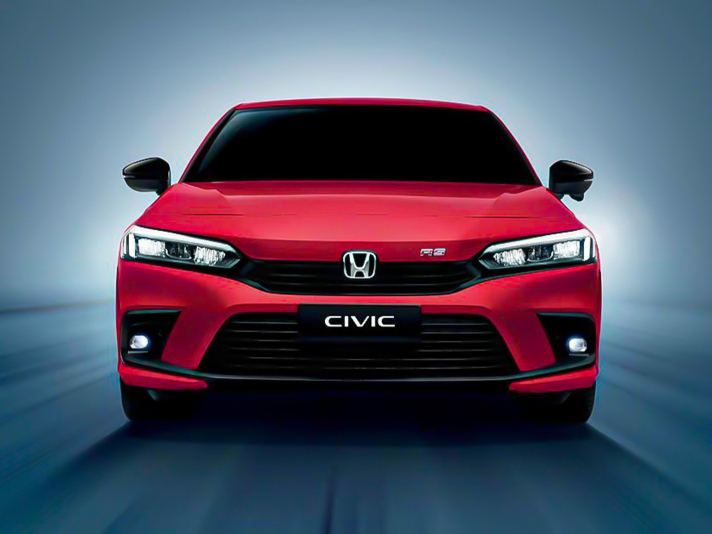
Honda Civic Interior Revealed: A Comprehensive Analysis of Civic’s Interior Charm
Kevin WongJul 10, 2025

Honda Civic Price Revealed: The Most Detailed Buying Guide!
AshleyApr 8, 2025

Whether it's about appearance or handling, why do young people all like Honda Civic?
WilliamSep 24, 2024
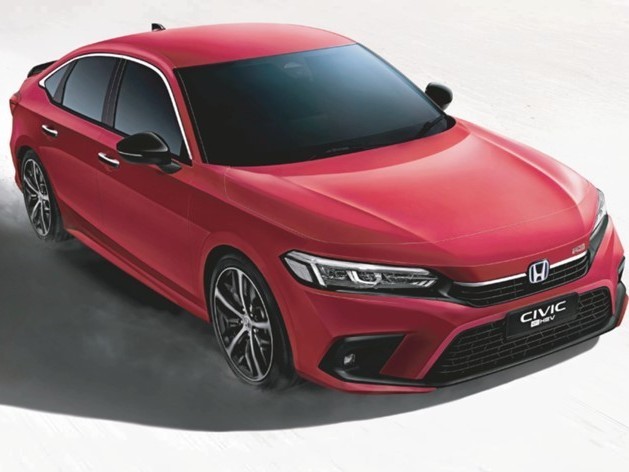
2022 Honda Civic: Hybrid car with the fastest acceleration, lowest fuel consumption, who says eco-friendly cannot be fast
JohnSep 3, 2024
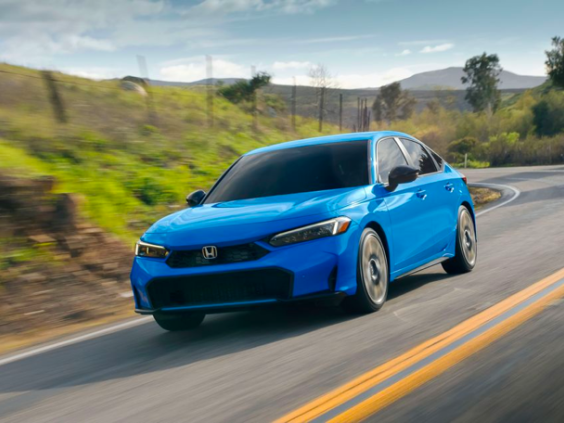
2025 Honda Civic debuts, minor changes in appearance, has 1.5 Turbo model been discontinued?
LienMay 22, 2024
View More





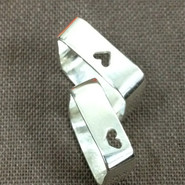






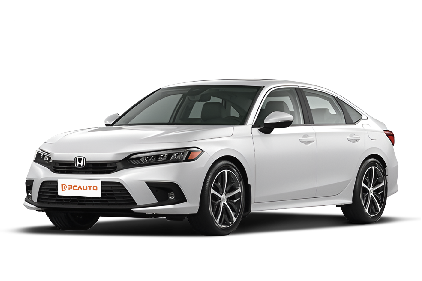
 Cars
Cars



Pros
Cons